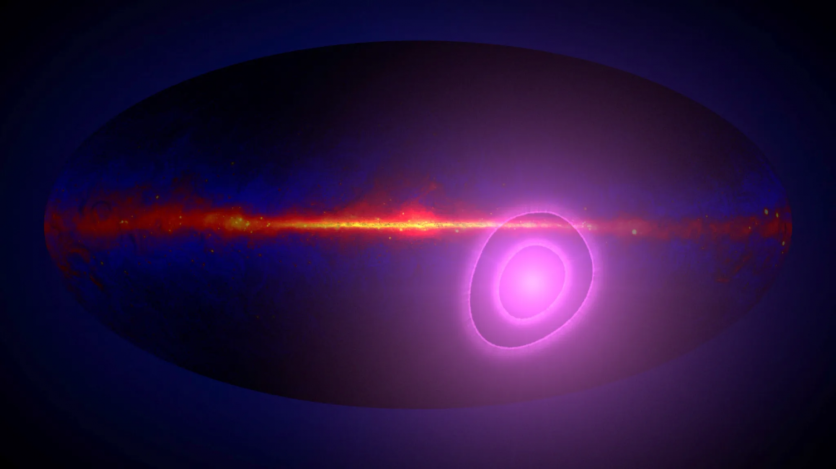Astronomers utilizing 13 years of data from NASA's Fermi Gamma-ray Space Telescope have made an unexpected and unexplained discovery - a gamma-ray signal outside our galaxy.
'Completely Serendipitous'
Presenting their findings at the 243rd meeting of the American Astronomical Society in New Orleans, Alexander Kashlinsky, a cosmologist at the University of Maryland and NASA's Goddard Space Flight Center, described the discovery as "completely serendipitous."

The gamma-ray signal, detected in a different part of the sky than initially sought, shares a direction and nearly identical magnitude with another unexplained feature generated by some of the most energetic cosmic particles ever recorded.
Initially, astronomers sought a gamma-ray feature associated with the cosmic microwave background (CMB), the universe's oldest light, originating from the cooling of the hot, expanding universe. Detected in 1965 as faint microwaves across the sky, the CMB's dipole structure was precisely measured by NASA's COBE mission in the 1970s.
This dipole pattern in the CMB is unique due to our solar system's motion at 230 miles per second with a 0.12% temperature difference. Scientists aim to verify or challenge this by searching for a similar pattern in other forms of light.
Fernando Atrio-Barandela, a co-author and a professor of theoretical physics at the University of Salamanca in Spain, emphasized the importance of such a measurement.
A disagreement with the size and direction of the CMB dipole could offer insight into physical processes in the very early universe, potentially back to when it was less than a trillionth of a second old.
The team added many years of data from Fermi's Large Area Telescope (LAT) to detect a related dipole emission pattern in gamma rays. The gamma-ray dipole should be amplified by as much as five times over the currently seen CMB due to the effects of relativity.
13 Years' Worth of Fermi Observations
Combining 13 years of Fermi-LAT observations data, researchers excluded resolved and identified sources, concentrating on the extragalactic gamma-ray background with gamma rays above approximately 3 billion electron volts.
The resultant gamma-ray dipole exhibited its peak in the southern sky, distinctly distant from the CMB's peak. Based on our solar system's motion, it also manifested a magnitude 10 times larger than anticipated.
Co-author Chris Shrader, an astrophysicist at the Catholic University of America in Washington and at Goddard, expressed surprise at the discovery, saying that although it wasn't what they were looking for, they suspect it may be related to a similar feature reported for the highest-energy cosmic rays.
The researchers hypothesize a probable connection between the two phenomena, gamma rays, and ultrahigh-energy particles, suggesting they may originate from as-yet-unidentified sources.
To decipher this cosmic puzzle, astronomers need to pinpoint these enigmatic sources or propose alternative explanations for both observed phenomena.
Related Article : Enigmatic 'Heartbeat' from Cosmic Gas Cloud Powered by a Black Hole? Could It Be Marvel-Baddie Galactus





